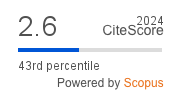An Efficient Deep Learning Technique for Brain Abnormality Detection Using MRI
DOI:
https://doi.org/10.4114/intartif.vol28iss75pp81-100Keywords:
MRI, Image Processing, CNN, Classification, BrainAbstract
This research proposes an effective and reliable deep learning method for detecting brain abnormalities via magnetic resonance imaging (MRI). The technique consists of two primary stages: first, a binary classifier that divides pictures into "Brain" and "Non-Brain" categories; second, multi-class classifiers that explicitly recognise categories such pituitary adenomas, gliomas, and meningiomas. The labelled and preprocessed data were taken from a collection of 7,753 pictures provided by Qhills Technologies Pvt. Ltd. Additional data from the Brain Tumour MRI collection was also incorporated to improve the model's generalisation skills. VGG-16 outperforms the other machine learning models, with an accuracy rate of 96.4%, when compared to ANN, CNN, VGG-16, and AlexNet. A thorough model evaluation and hyperparameter tweaking process was conducted using the accuracy, precision, recall F1-score. The findings of this study point to the potential of deep learning techniques in identifying brain disorders fast and precisely, opening the door to more precise diagnosis in clinical settings.
Downloads
Metrics
Downloads
Published
How to Cite
Issue
Section
License
Copyright (c) 2024 Iberamia & The Authors

This work is licensed under a Creative Commons Attribution-NonCommercial 4.0 International License.
Open Access publishing.
Lic. under Creative Commons CC-BY-NC
Inteligencia Artificial (Ed. IBERAMIA)
ISSN: 1988-3064 (on line).
(C) IBERAMIA & The Authors









